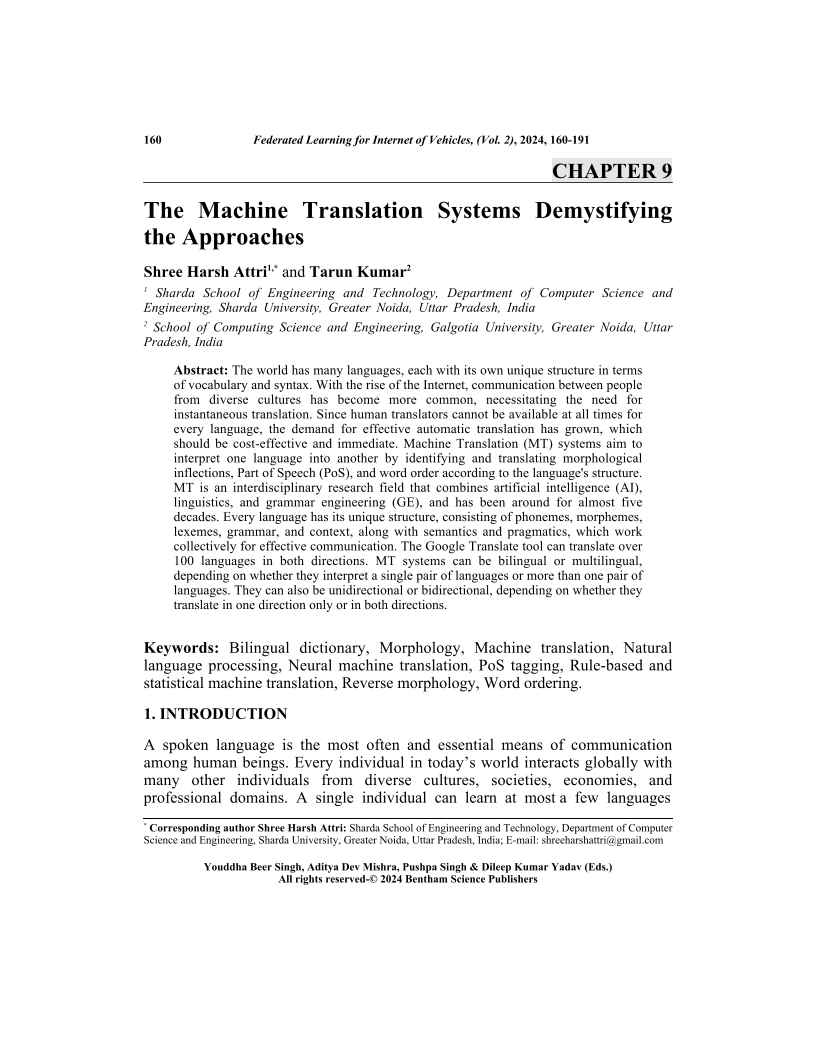- Home
- Books
- A Handbook of Computational Linguistics: Artificial Intelligence in Natural Language Processing
- Chapter
The Machine Translation Systems Demystifying the Approaches

- Authors: Shree Harsh Attri1, Tarun Kumar2
-
View Affiliations Hide AffiliationsAffiliations: 1 Sharda School of Engineering and Technology, Department of Computer Science and Engineering, Sharda University, Greater Noida, Uttar Pradesh, India 2 School of Computing Science and Engineering, Galgotia University, Greater Noida, Uttar Pradesh, India
- Source: A Handbook of Computational Linguistics: Artificial Intelligence in Natural Language Processing , pp 160-191
- Publication Date: August 2024
- Language: English
The Machine Translation Systems Demystifying the Approaches, Page 1 of 1
< Previous page | Next page > /docserver/preview/fulltext/9789815238488/chapter-9-1.gif
The world has many languages, each with its own unique structure in terms of vocabulary and syntax. With the rise of the Internet, communication between people from diverse cultures has become more common, necessitating the need for instantaneous translation. Since human translators cannot be available at all times for every language, the demand for effective automatic translation has grown, which should be cost-effective and immediate. Machine Translation (MT) systems aim to interpret one language into another by identifying and translating morphological inflections, Part of Speech (PoS), and word order according to the language's structure. MT is an interdisciplinary research field that combines artificial intelligence (AI), linguistics, and grammar engineering (GE), and has been around for almost five decades. Every language has its unique structure, consisting of phonemes, morphemes, lexemes, grammar, and context, along with semantics and pragmatics, which work collectively for effective communication. The Google Translate tool can translate over 100 languages in both directions. MT systems can be bilingual or multilingual, depending on whether they interpret a single pair of languages or more than one pair of languages. They can also be unidirectional or bidirectional, depending on whether they translate in one direction only or in both directions.
-
From This Site
/content/books/9789815238488.chapter-9dcterms_subject,pub_keyword-contentType:Journal105

